Hard sonar reflection (yellow) created by vigorous gas bubble discharge (GB425 mud volcano)
One of the most significant challenges faced when working at areas with active fluid venting is to quantify the fluid flux rate from the deep reservoirs to the overlying water column. A primary objective of this project is to link microbial community composition and activity to differences in fluid chemistryand fluid flux, so we have to quantify the fluid flux and evaluate whether, and if so how, the flux changes over time. To the eye, fluid fluxes at these sites appear high: this image shows the strong (yellow) sonar reflection of gas bubbles being released along a fault line at the GB425 mud volcano. The wall of bubbles was about 50 meters long and about 3 meters wide (see image gallery below to view the bubble wall).
Rick Peterson and Rich Viso (CCU) preparing samples for radium analysis
To achieve our objective, we are characterizing the fluid’s geochemistry and using a suite of inert tracers, including temperature, salt content, radon concentration, and radium isotopes, to independently estimate and verify the rates of fluid flux. Temperature and salt content are conservative tracers and we measure these parameters in the brines using a conductivity-temperature sensor, which we lower carefully through the fluid. To evaluate change in fluxes over time, we deploy logging temperature sensors in the brine so that we can evaluate an annual record of temperature in the fluid and in the overlying seawater. Rick Peterson and Rich Viso (both from Coastal Carolina University) are quantifying concentrations of radon and radium in the venting fluids and overlying in the water column to help constrain fluid fluxes. The data they are generating is an essential component of the information required to constrain fluid fluxes at the study sites. When temperature and salt are combined with radon and radium, two excellent inert tracers of deeply sourced fluid input, we expect to be able to constrain fluid fluxes quite well. Quantifying the flux is complicated because we must know the chemical signature of the deep “end-member” fluid and to do this, we use the brine sampler to sample the deepest parts of actively venting sites (see image gallery below of brine sampler intake penetrating into the deep brine).
Multibeam seismic image of a mud volcano; the hotter colors are more shallow, showing how the mud volcano rises from the seafloor
The features we are studying are dramatic, as shown in this multibeam seismic mosaic of an active mud volcano, the so-called “Hot Site”, produced by Rich Viso (Coastal Carolina University). The combination of seafloor mapping, sampling brine fluids and the overlying water column, and the holistic suite of geochemical tracer being applied will allow us to obtain the “flux” data necessary to link habitat parameters and habitat change to microbial community dynamics.
Brine sampler beneath the brine surface
Mud and gas venting from a mud volcano
CTD and brine sampler entering a mud volcano crater







